We started the day early and had a quick breakfast of fruit, granola, yogurt, and croissants. Then we headed to catch our train to Toledo.
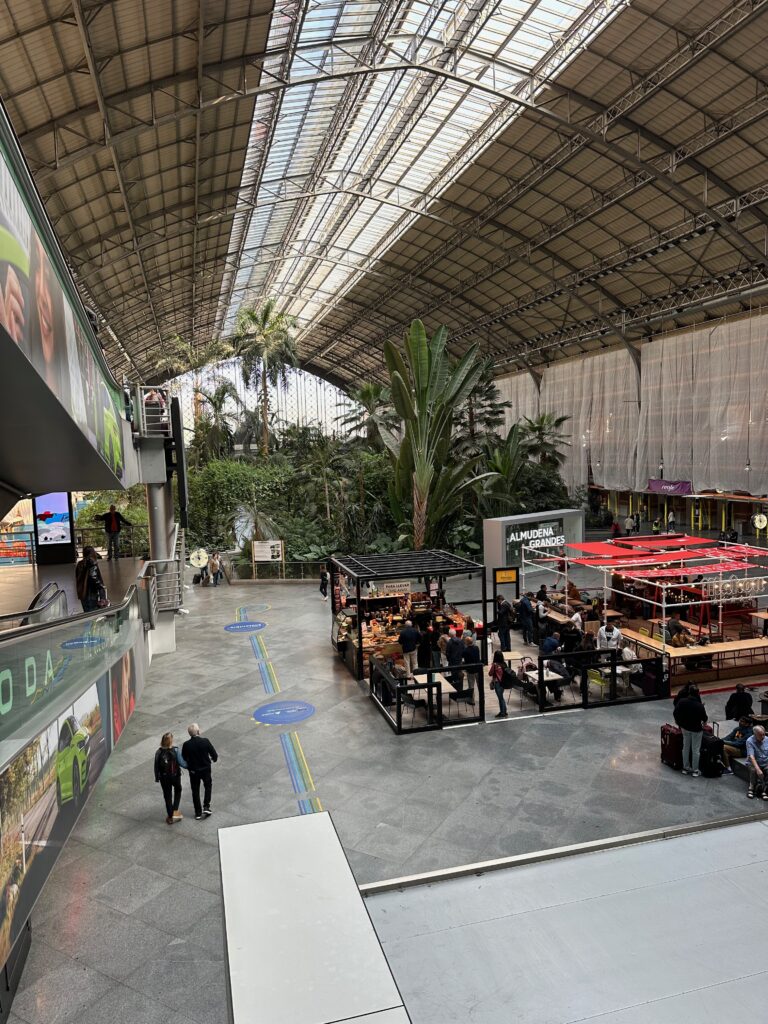
After only 30 minutes we arrived to this amazing train station giving us a hint as to what the day would hold.
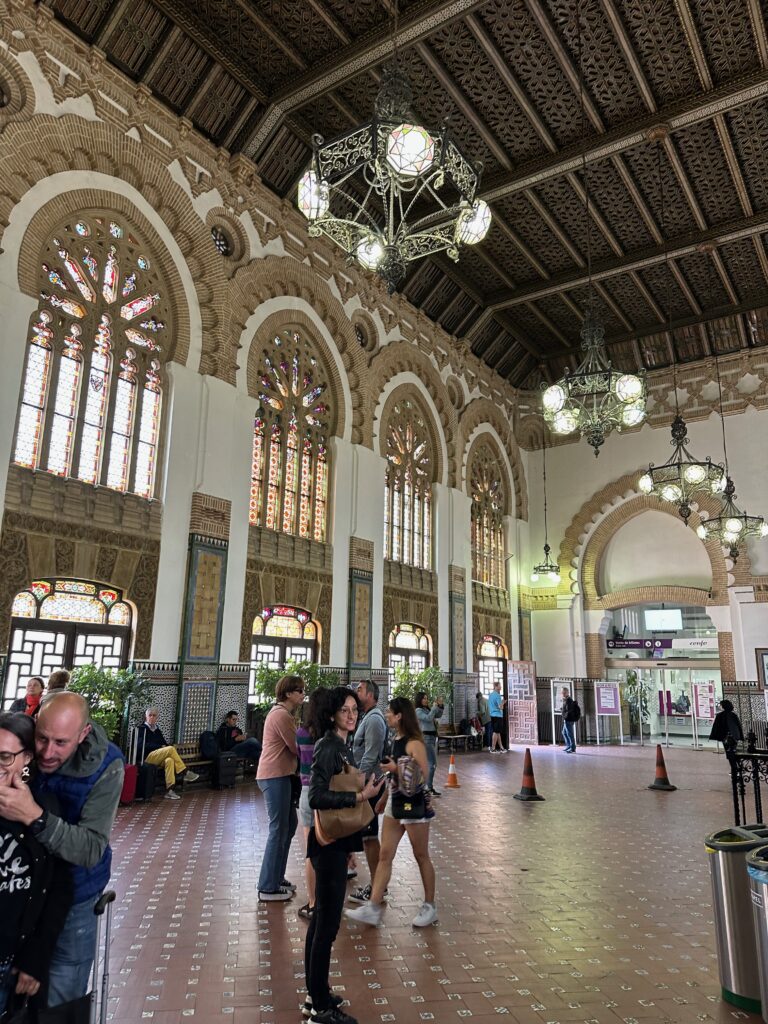
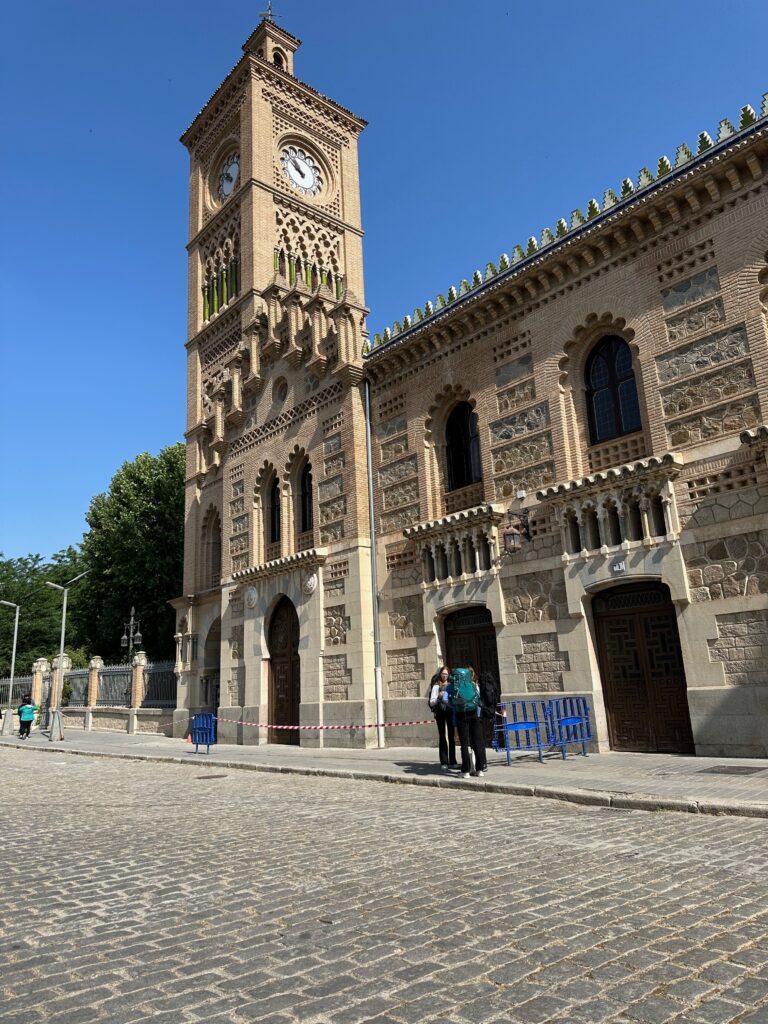
Here, we met our guide for the day, Alejandro (Alex). He is an archeologist who was born in Toledo and has spent his life working there (with a couple of side trips to meet his wife). We climbed into a taxi and started up the hill going round the hilltop where sits Toledo. On the way up we stopped at an overlook to see the city from afar.
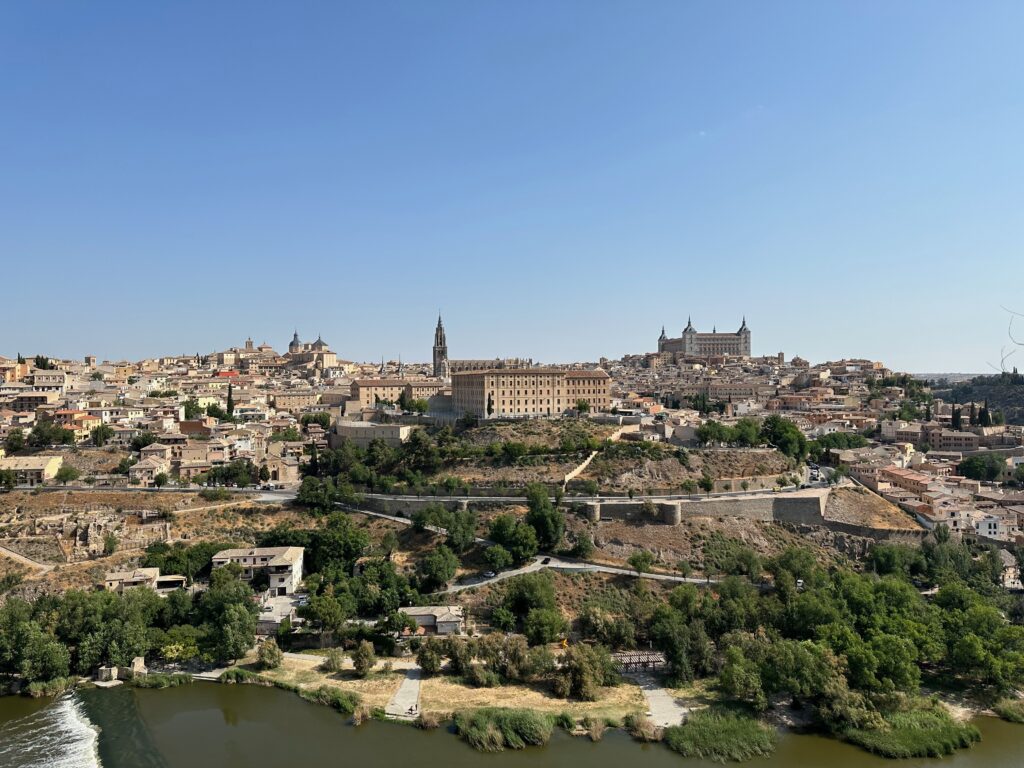
We exited the taxi in the town square where Alex gave us a “brief history of the conquerors of Toledo”. First, there were “city states”, villages and towns that had a leader and an organized way of living or culture. They often fought one another but never amassed much territory. Toledo was considered a valuable asset due to location atop a hill, surrounded by a natural moat. In other words, well fortified. Then came the first invaders, The Roman Empire. They established systems of government but weren’t always that nice. Around 250-300, the Catholic Dioceses of Toledo was established. In 554 the second invaders took over – The Visigoths. They were sabotaged by the Moors around 700. This brought Islam as the accepted religion. Then around 1085, the Christians invade and take over establishing yet another state religion led by Alfonso VI of León and Castile. And around the same time, Sephardi Jews emerged as a distinct community on the Iberian Peninsula so they were also a part of Toledo. As Alex put it, Spaniard’s can claim decendents from all this heritage and that makes up a significant part of Spanish culture. Whew! Plus they reused all the original buildings from the previous invaders and just “painted” over so we have Gothic over Moorish over Roman over Medieval. Let’s start walking around, the streets wind all over the place and are currently being decked for the Festival of Corpus Christi, when they take the “host” from the cathedral and parade it around town. The streets have to be covered, thus the tenting. They also spread thyme over the pavement.
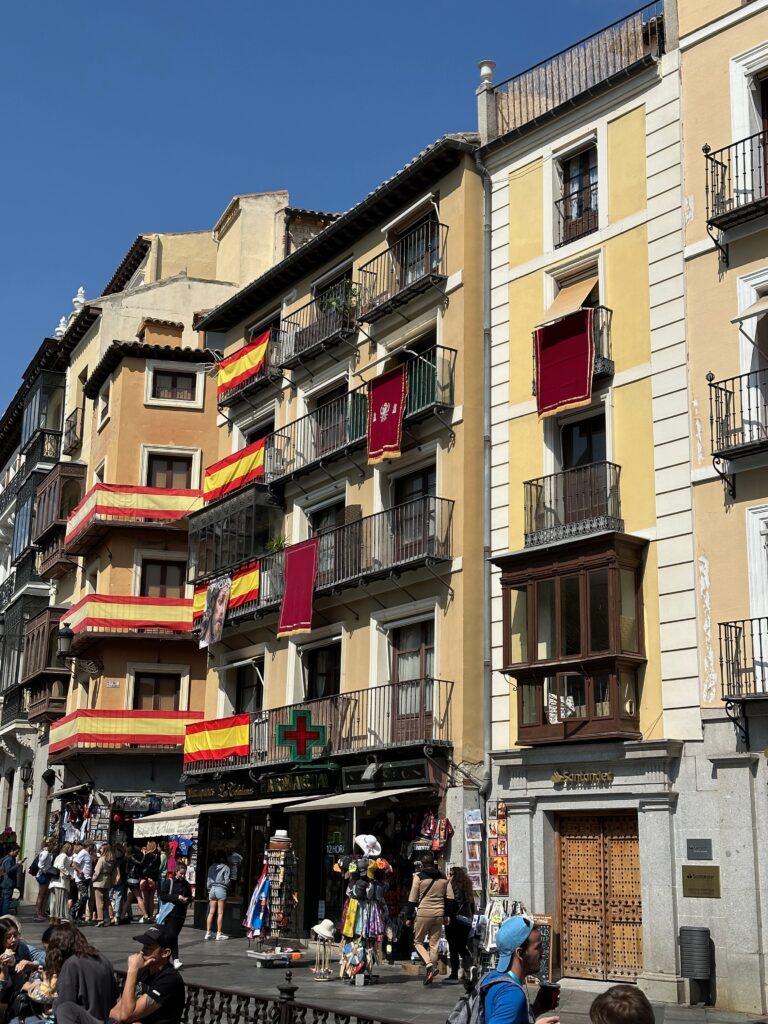
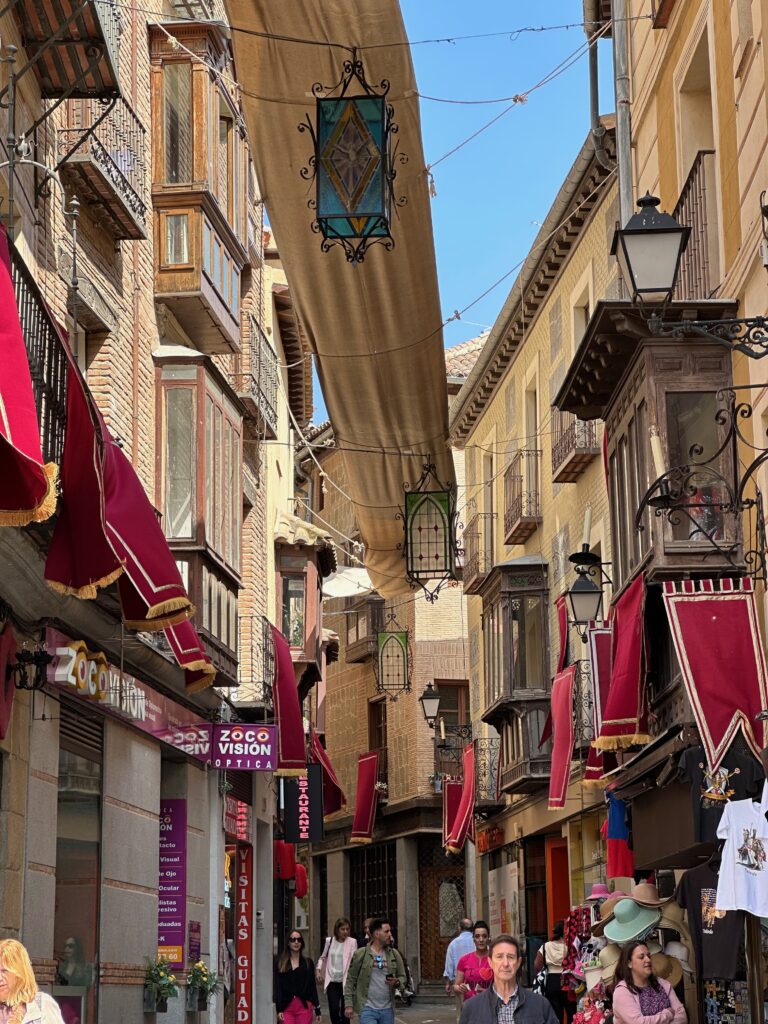
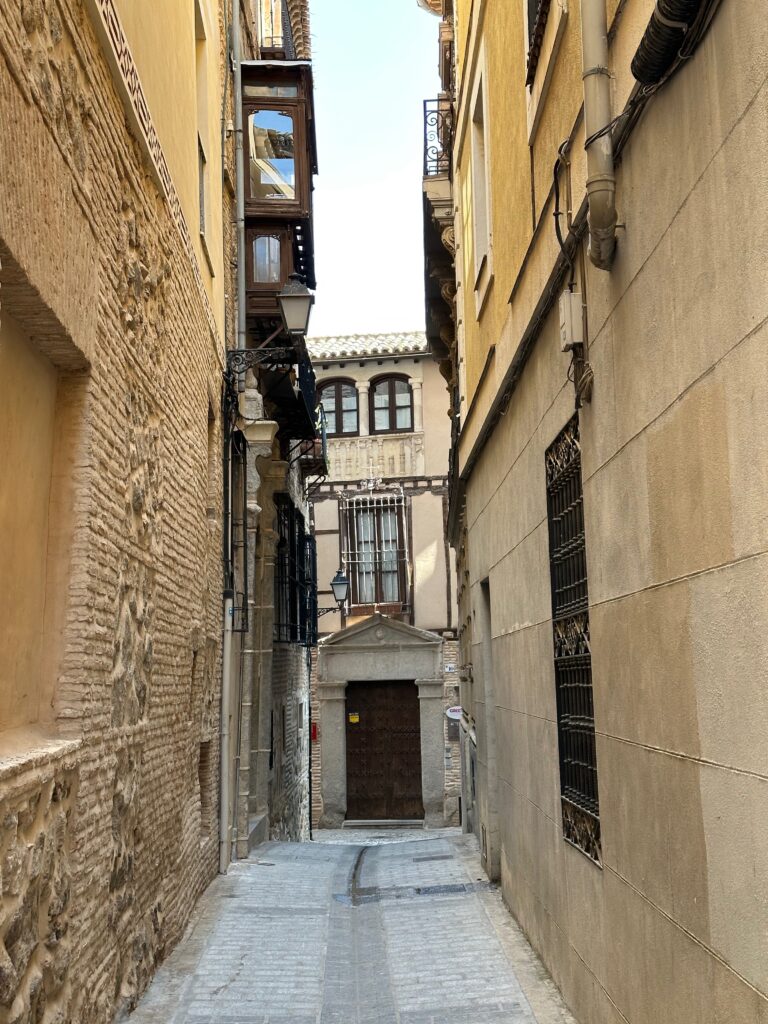
Here’s Alejandro in front of his childhood home.
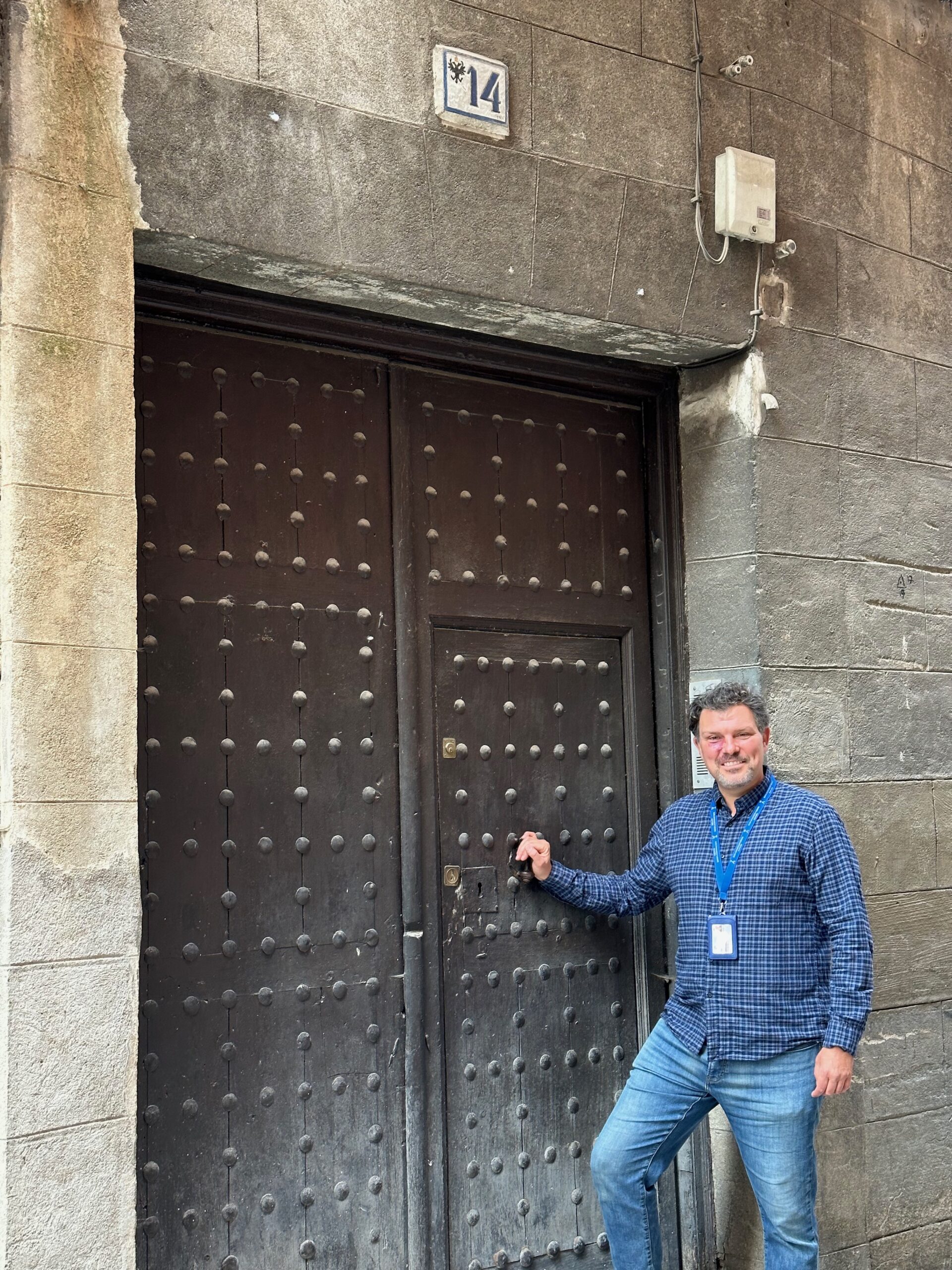
As Toledo was a considerable seat of power. The homes were the mansions of the rich and powerful. Not large, but the front doors make a statement.
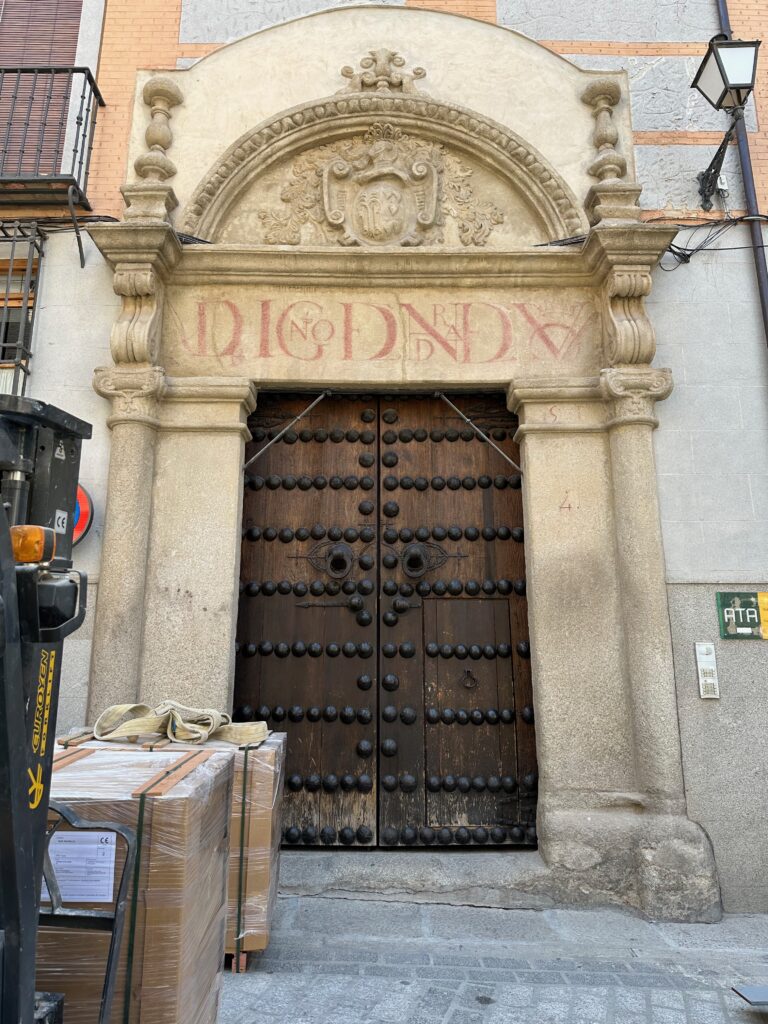
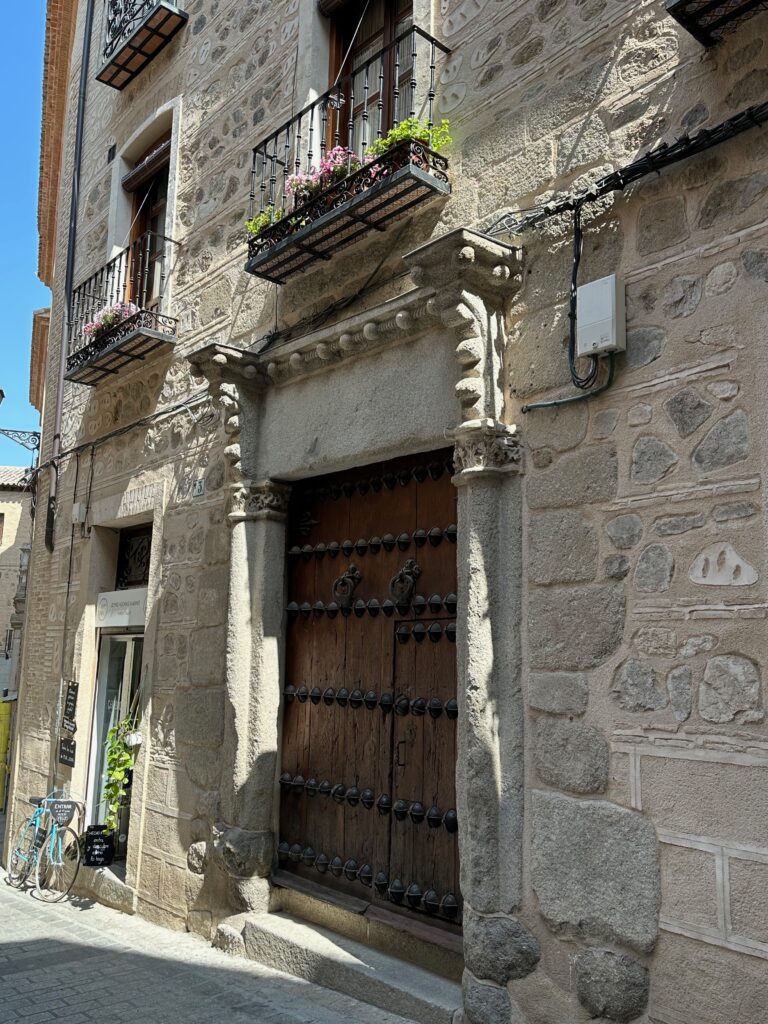
Alejandro took us to a church off the beaten path that provided the best example of how architecture reflected the ever changing power structure and building styles. Here we see Roman, Visigoth, Moorish, and finally the Catholics. All in the same church.
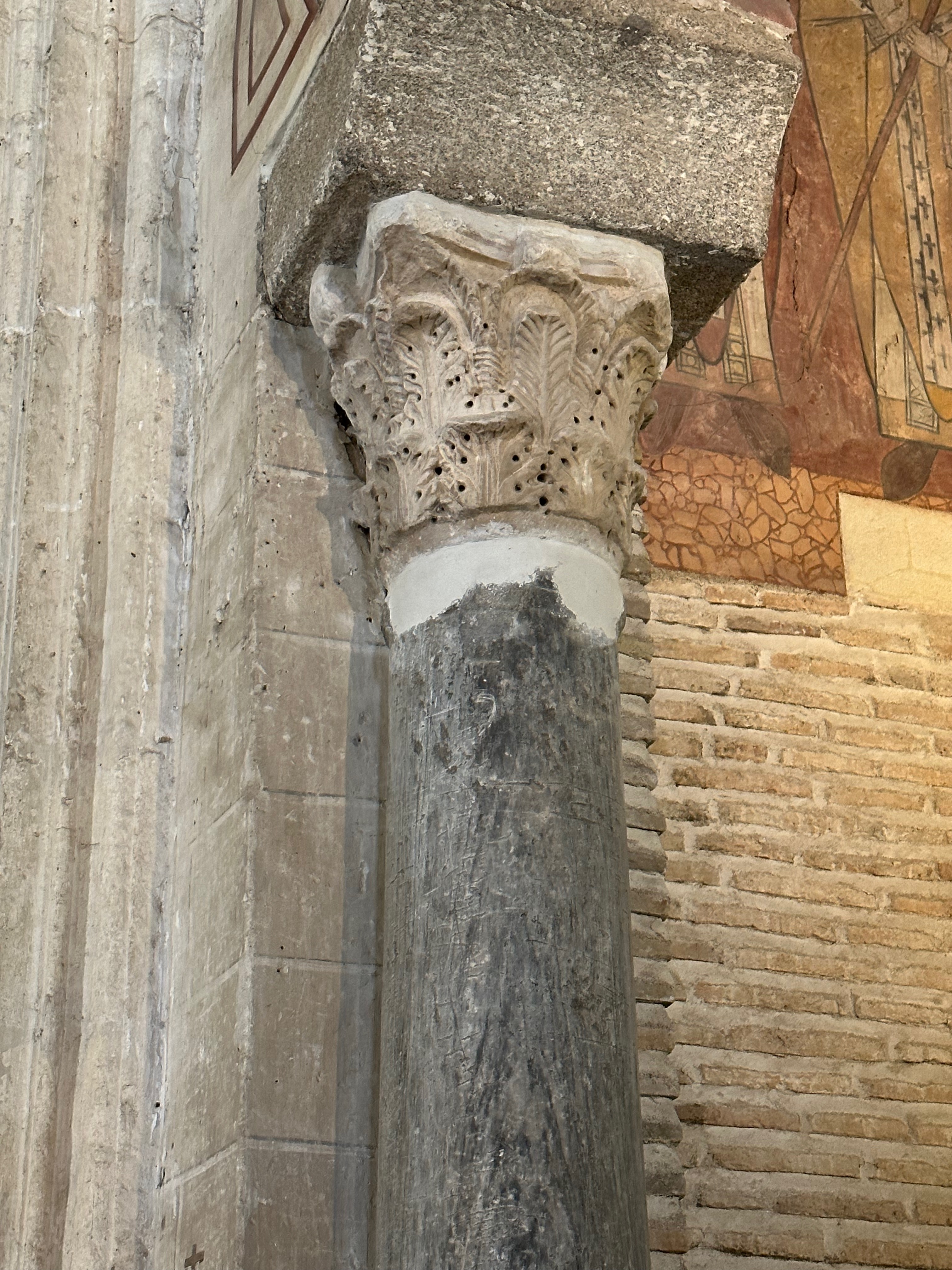
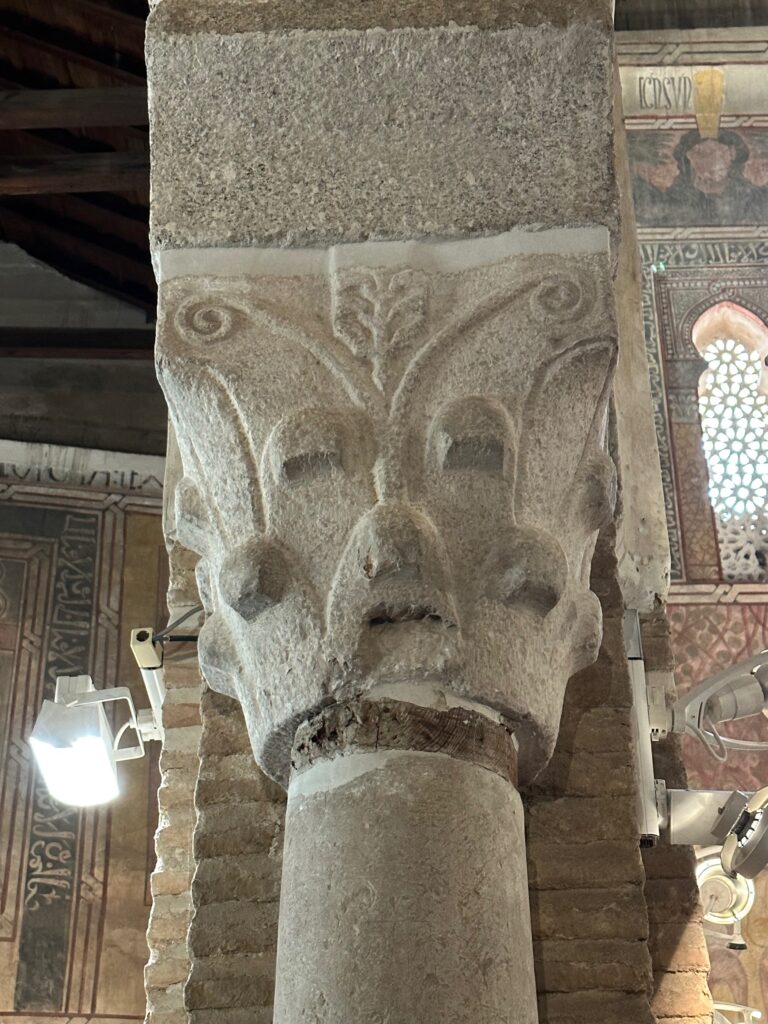
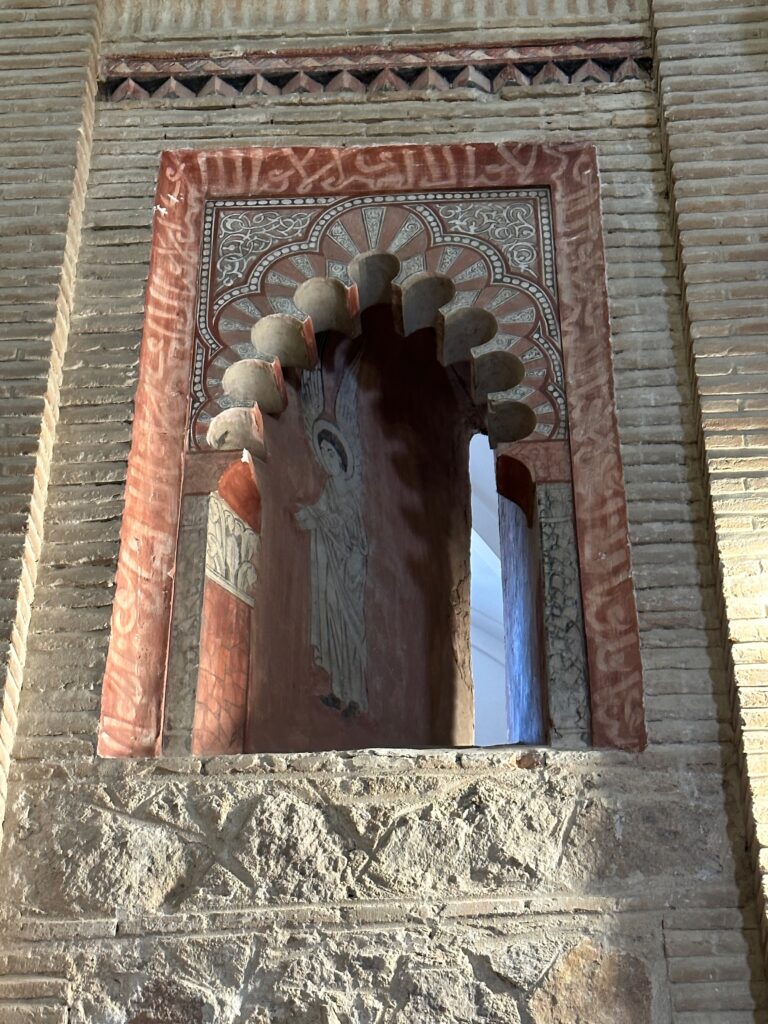
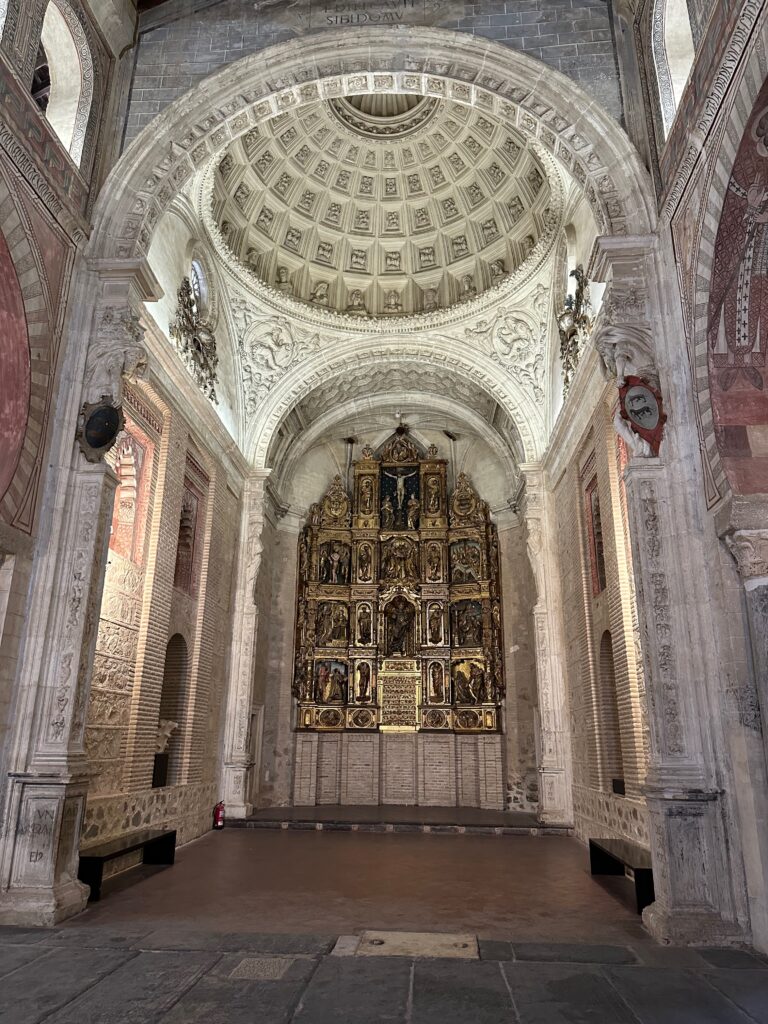
We were able to stop in a private home to see the function of the central courtyard in all homes, used for light and cooling.
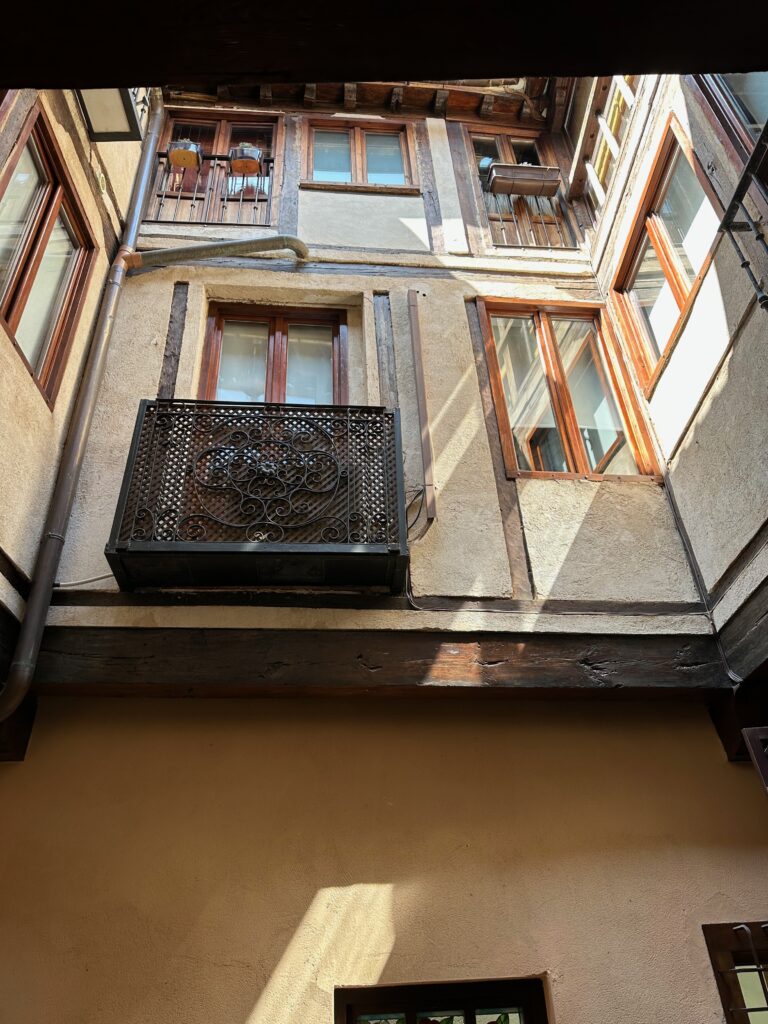
We sat in this lovely place for a break.
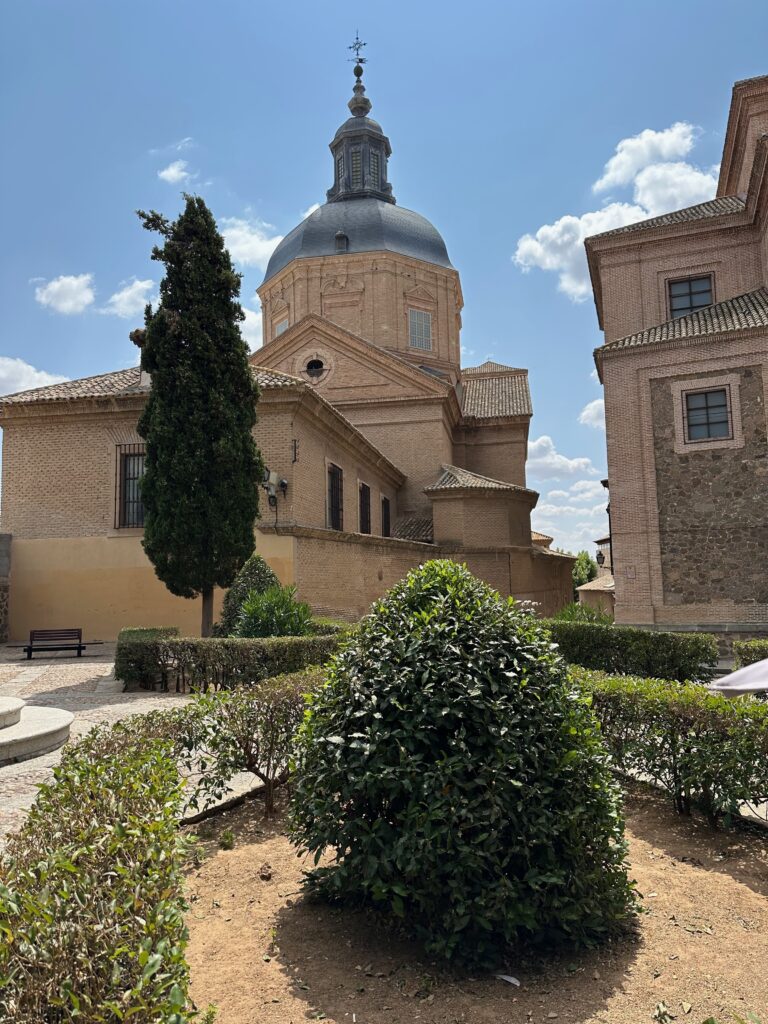
Again, reflecting the mishmash of culture and power the Synagogue of El Tránsito was paid for by a King and designed by the same architect of the Alhambra. Now a museum, it is a place of significance for Sephardic Jews, some of whom can trace their ancestry back to Toledo. The roof timbers are original.
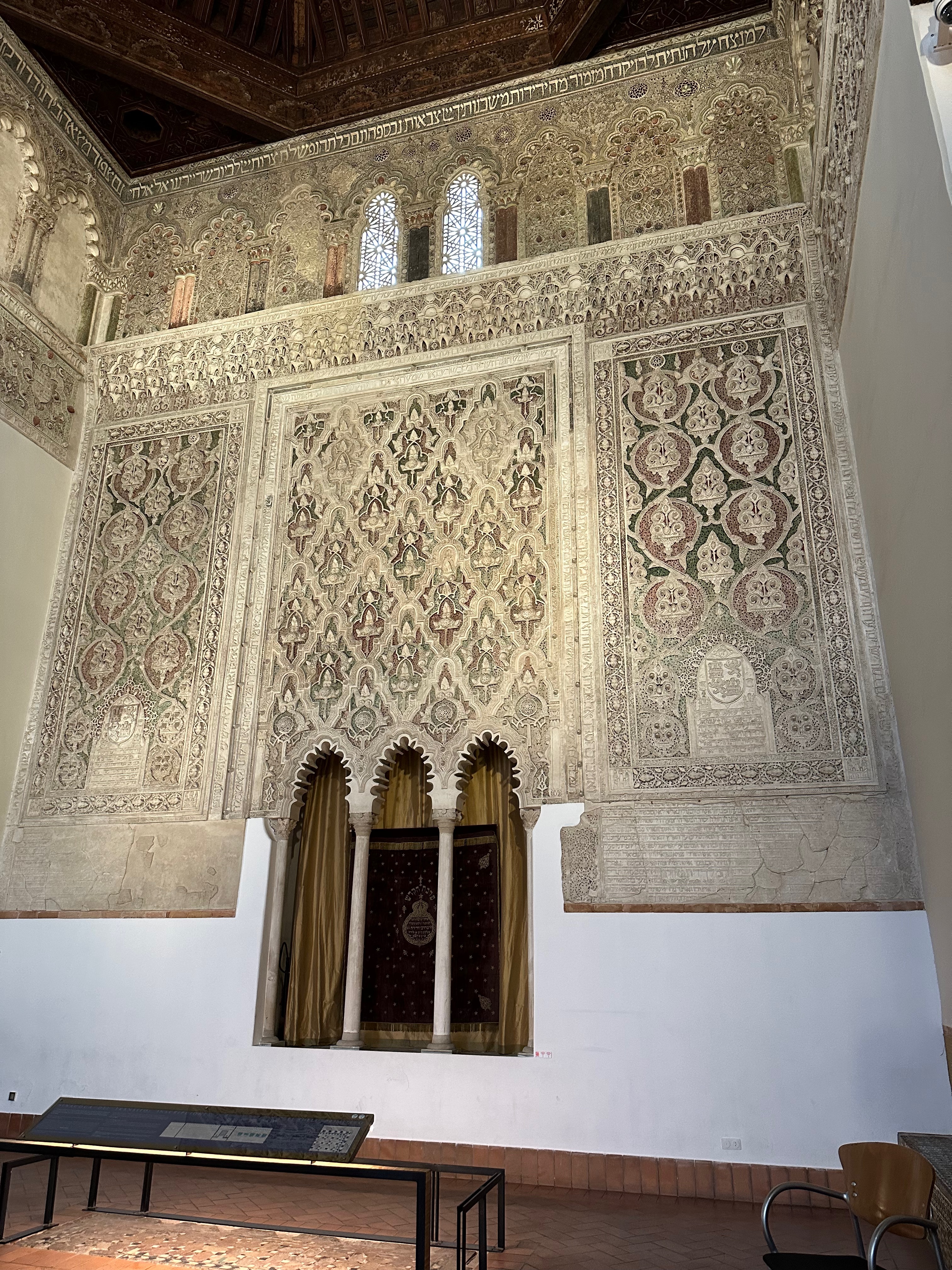
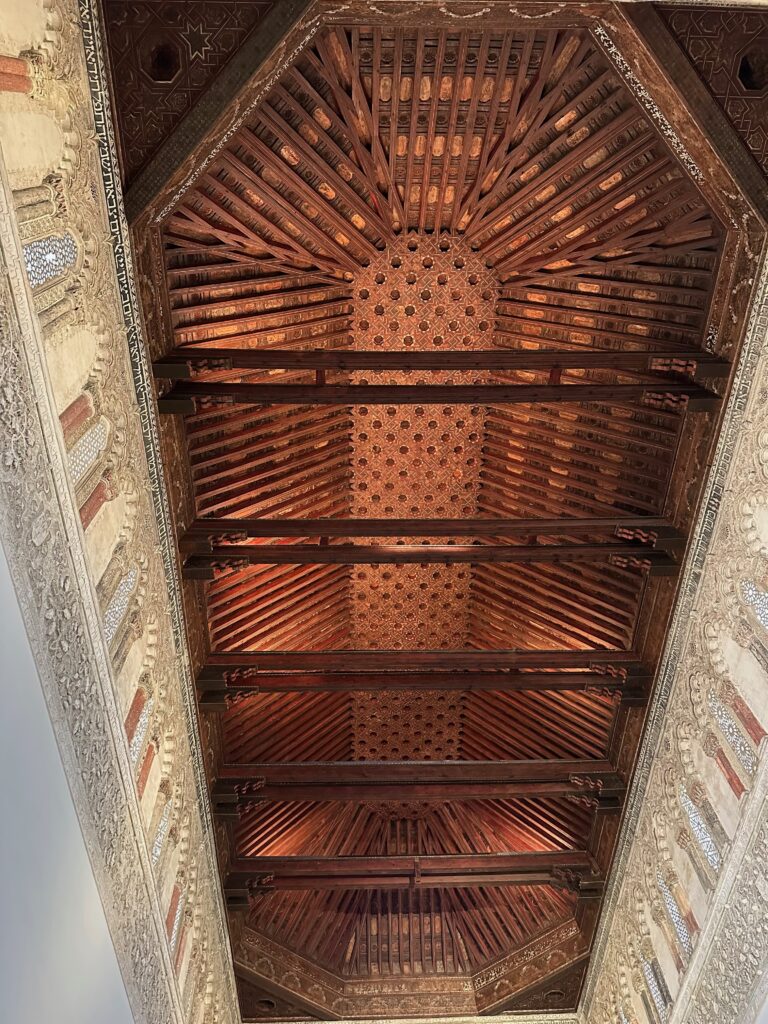
Time for lunch! We noshed on prawn and Spanish potato salad, and confit of duck over braised leeks.
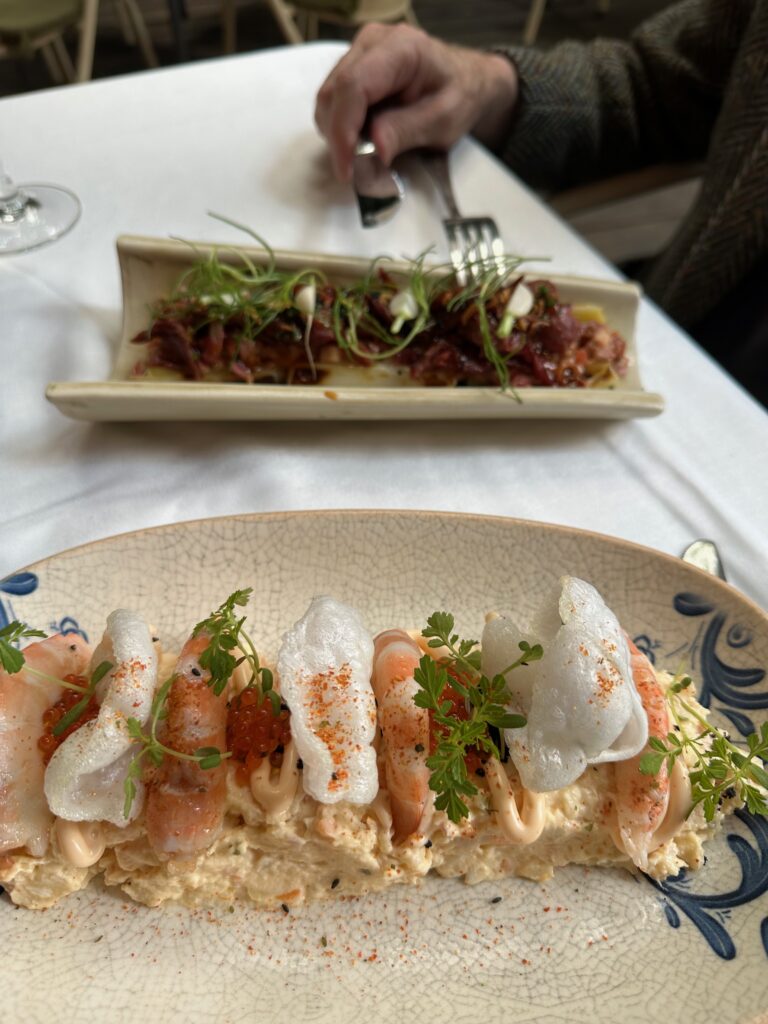
After lunch we essentially got lost and stumbled upon the cathedral. THEE Primatial Cathedral of Saint Mary of Toledo. The place is huge! These pictures do not do it justice but let’s just say it is way over the top.
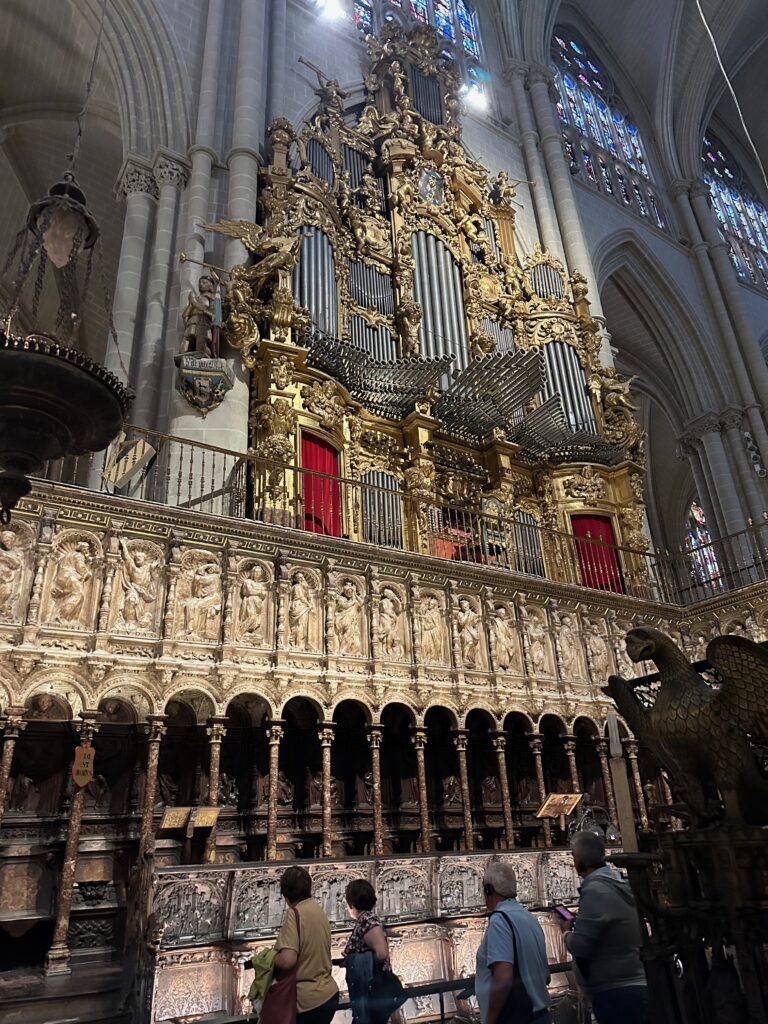
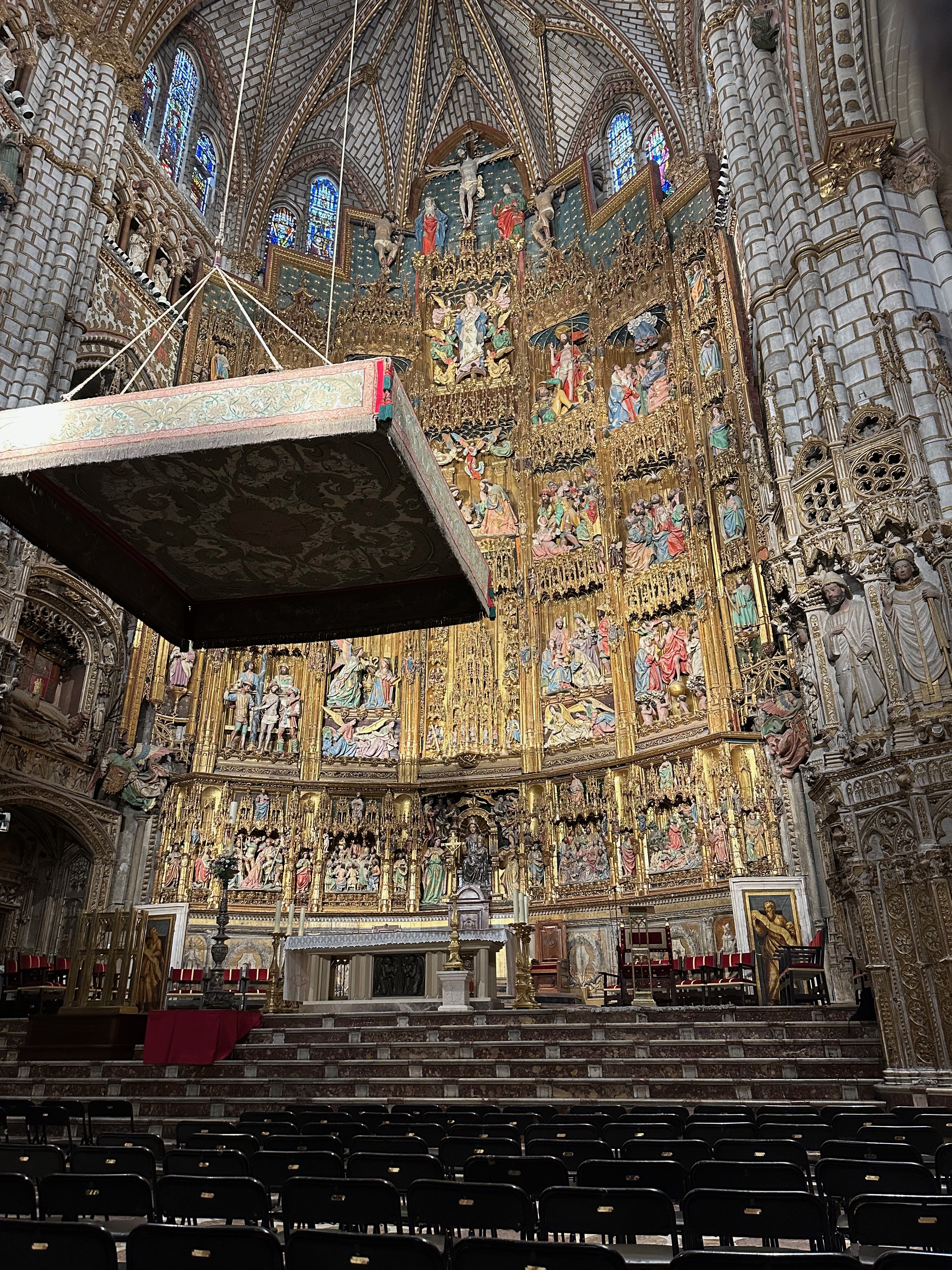
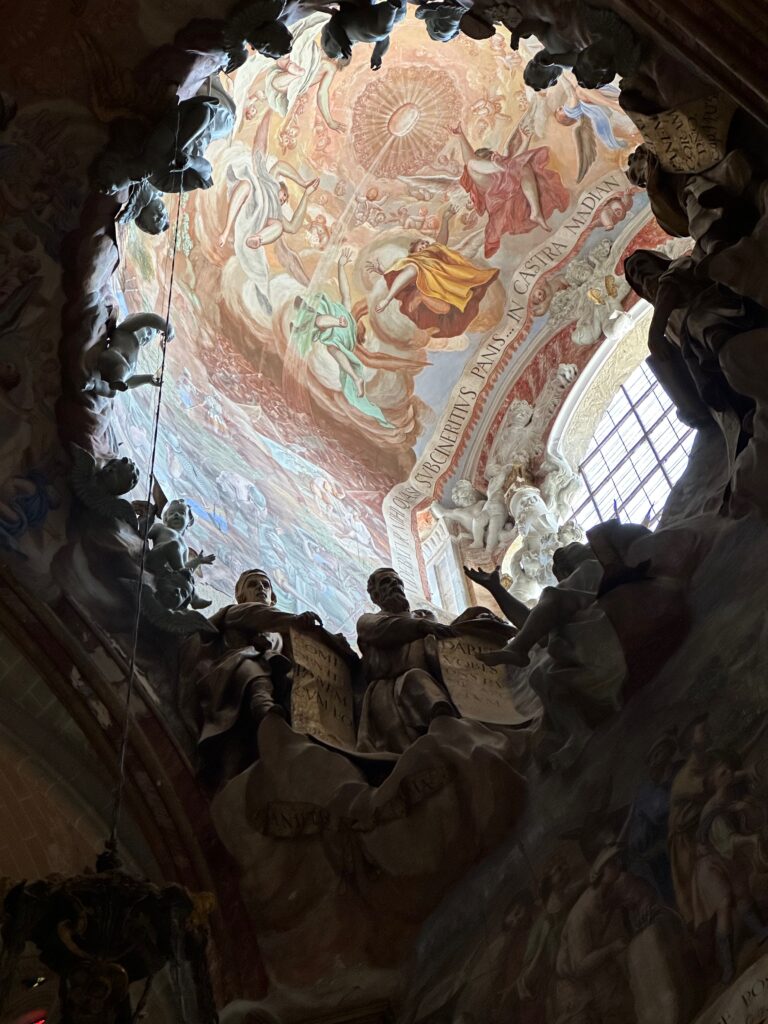
And what is a cathedral without a body in the basement?
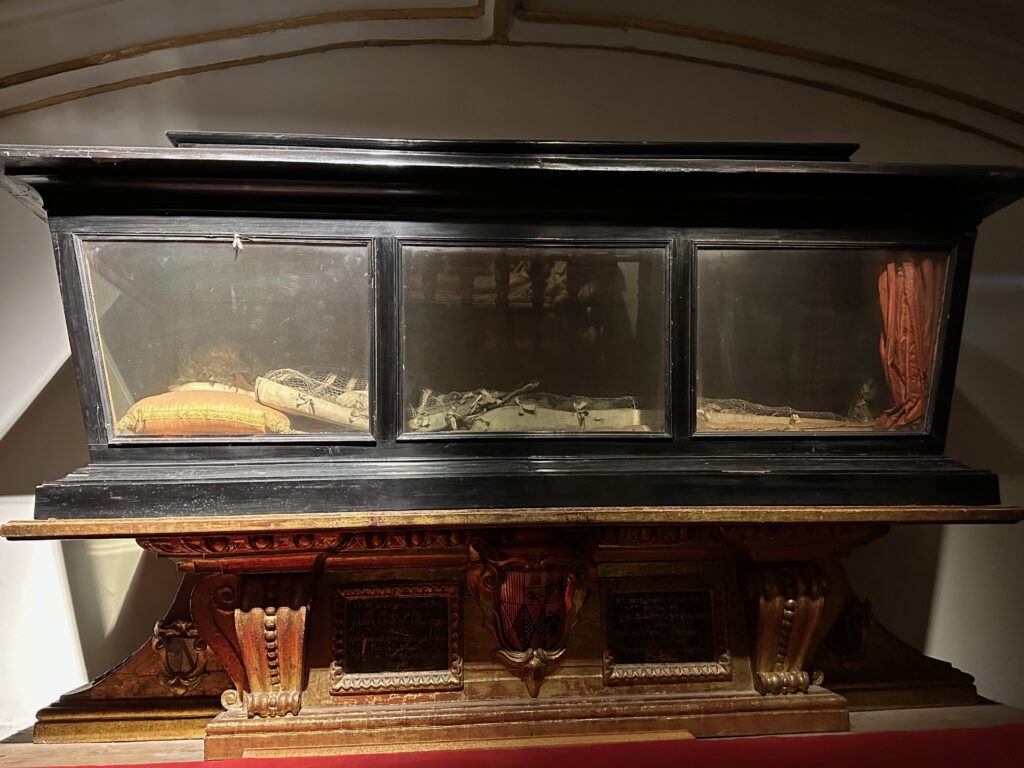
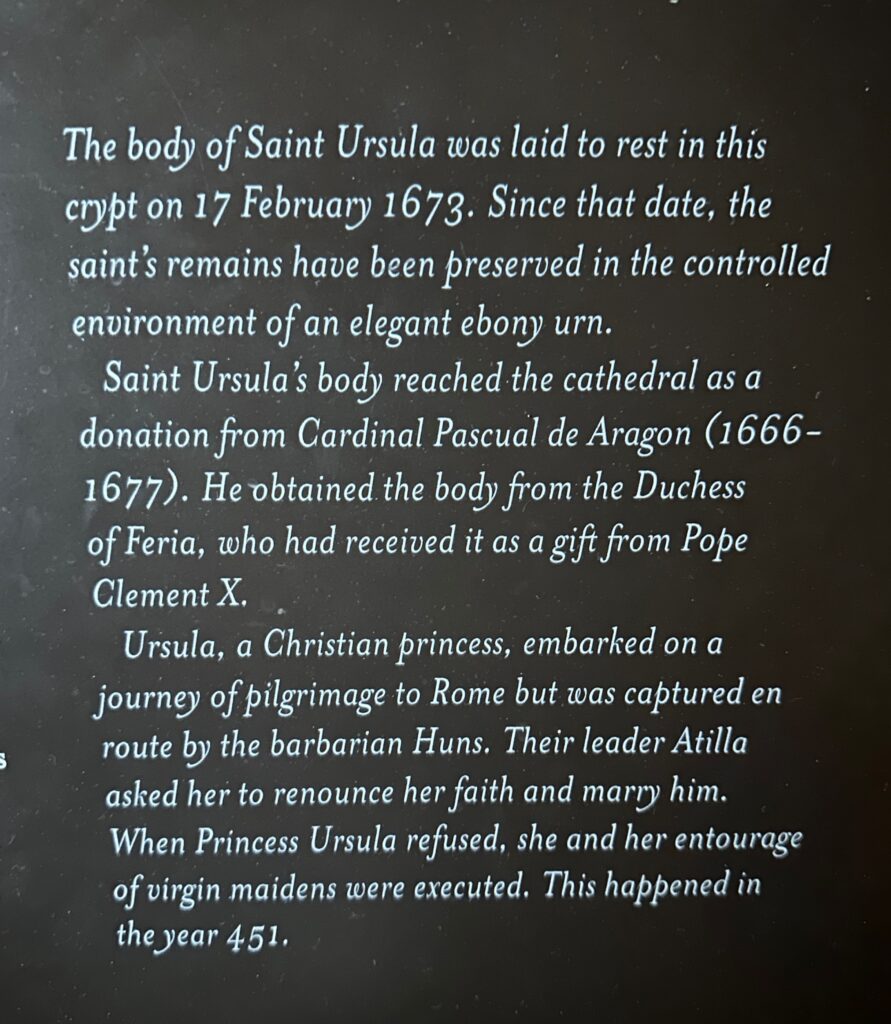
Time for the train ride home. I love European train stations.
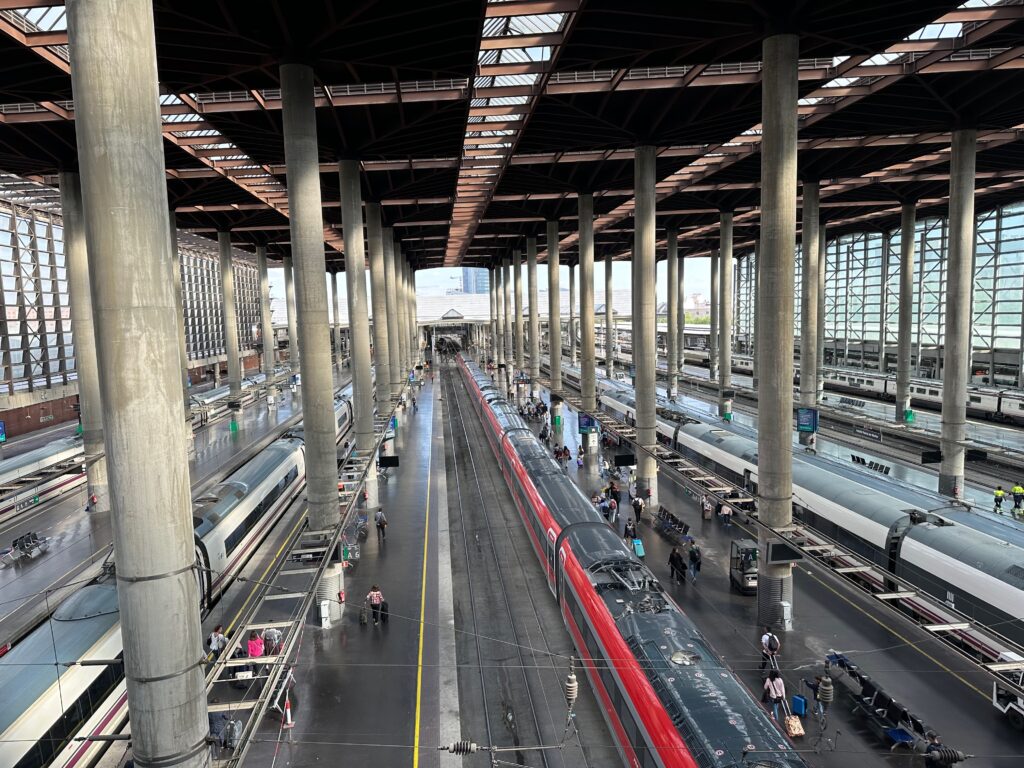
Consuelo, you need to up your front door game…
Lovely photos and vivid description of Toledo, a travesty that a city in Ohio bears the same name!